
On May 17, 2022, we gathered members of the Stone Center to record an oral history of their experiences before, during, and after Hurricane Katrina. Below you can access the full recording; what follows is a multimedia chronology of the events that unfolded in 2005-2006.
Before the Storm | August 23-28, 2005
News of Hurricane Katrina arrived to Tulane at the very beginning of the Fall 2005 semester. That Friday, Ana López spent the entire day running new faculty orientation. Jimmy Huck tells us, “That weekend was Move-in Weekend for freshmen undergrads […] We were getting started, not thinking that it would be an ending.” Freshman Convocation took place the morning of Saturday, August 27, 2005, where, in a dramatic turn of events, President Scott Cowen welcomed students and immediately asked everyone to leave. The following day, Sunday, August 28, the first-ever mandatory evacuation of New Orleans was issued by the city.
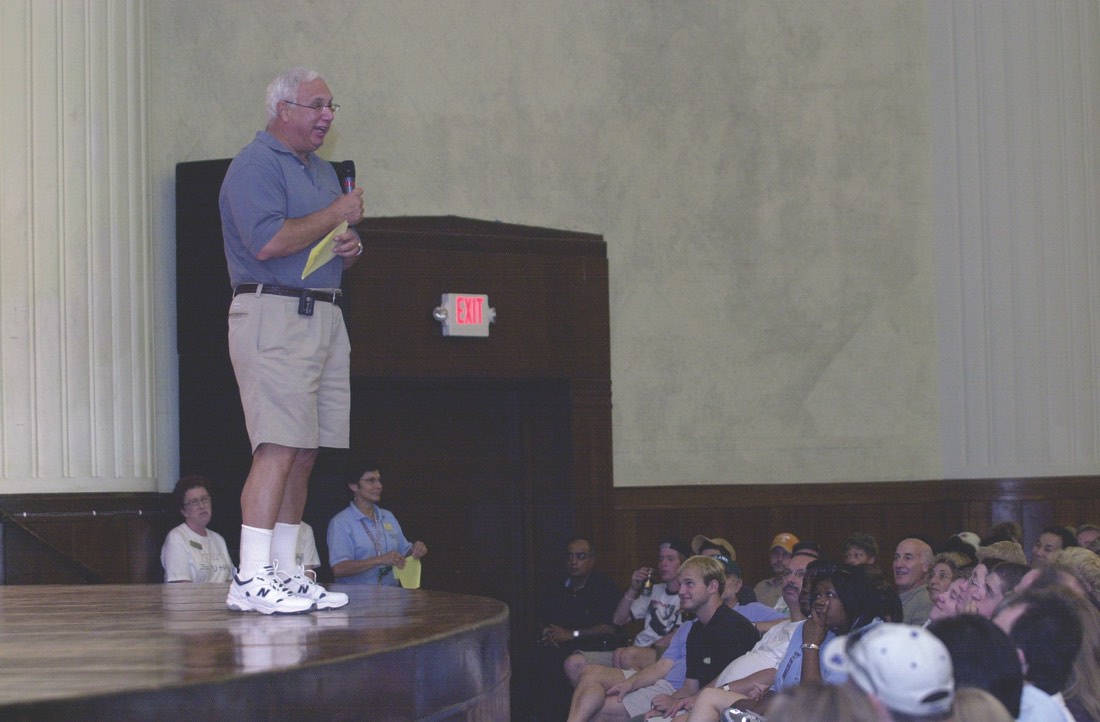
“Welcome to Tulane University. Now, I’d like you to leave your belongings in your dorm room and leave town.”
– Scott Cowen1
By day’s end on Friday, preparatory measures were taken at the Stone Center: shutting blinds, unplugging computers, grabbing laptops and hard drives. But, as opposed to the hurricane preparedness of today, in 2005 “there was no plan” for the university, especially given how quickly orders rolled out as the storm changed course.
Students, faculty, and staff of the Stone Center evacuated rapidly, scattering throughout the country and expecting to be back soon. Orientation for the new cohort of Latin American Studies graduate students was scheduled for Monday, August 29th, the day Hurricane Katrina hit New Orleans as a category 5 storm.
The storm | August 29, 2005
After the storm | September-October 2005
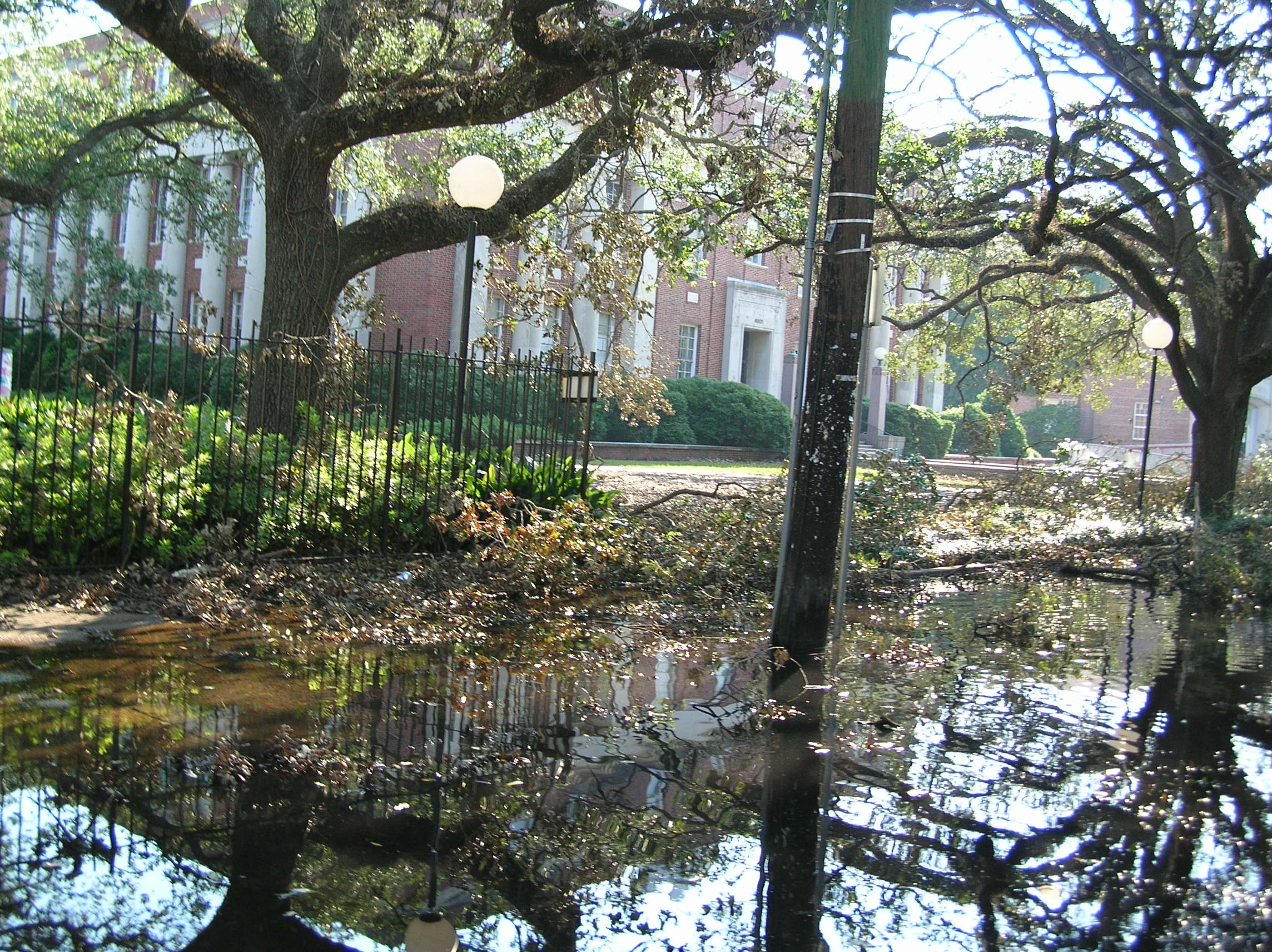
Communication was one of the major issues facing members of the Stone Center in the immediate aftermath of the storm. All of Tulane’s systems went down and data back-ups were inaccessible due to flooding.
“There was no e-mail, there was no website, nothing. Nothing. Some of us had alternative e-mails…for many of us, our tulane.edu had been our first e-mail address and our only e-mail address.”
– Ana López
Not only was email unavailable, but phones were also not working. Some of the staff of the Stone Center had remained in the Greater New Orleans area, while others evacuated to parts of the South, making it nearly impossible for the disparate staff to communicate.
At this time, the priorities of the Stone Center were tripartite: locating individuals (specifically faculty and graduate students), ensuring they were paid, and setting them up for productive-as-possible fall semesters outside of New Orleans. Valerie McGinley remembers: “A lot of September was spent on the phone…with payroll, how to get the students paid, how to get the new faculty paid because they had just arrived so they weren’t quite in the system yet… this was before direct deposit.” In a world prior to Zoom and Skype, Stone Center staff meetings were conducted via 1-800 conference calls.
With the dispersion of Tulanians, the Stone Center leaned on its networks of colleague institutions in an effort to continue its labors from afar. Tom Reese relates that the Center for Latin American Studies at UT-Austin generously offered office space, computers, and supplies to allow staff to set up a temporary center of operations. Latin American Studies graduate students were relocated to various programs at other universities.
“We counted on our colleagues at other institutions, we’re like, our student is there[in that city], can we send them to you? Can you check on them?”
– Valerie McGinley
Take a look into Valerie McGinley’s Agenda from Fall 2005:
“This was the time of the blog”
With traditional lines of communication unavailable, the Stone Center tapped into the rise of the blog as a means of community building, resource sharing, and dissemination of information. A number of important blogs arose at this time, including: Stone Center for Latin American Studies: Post-Katrina Information and Alums and Friends of the Stone Center for Latin American Studies (created by Sallie Hughes and Kay Bailey).
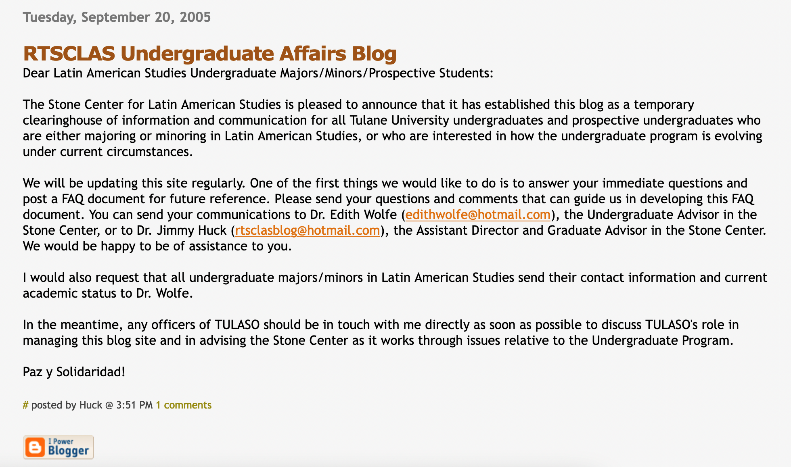
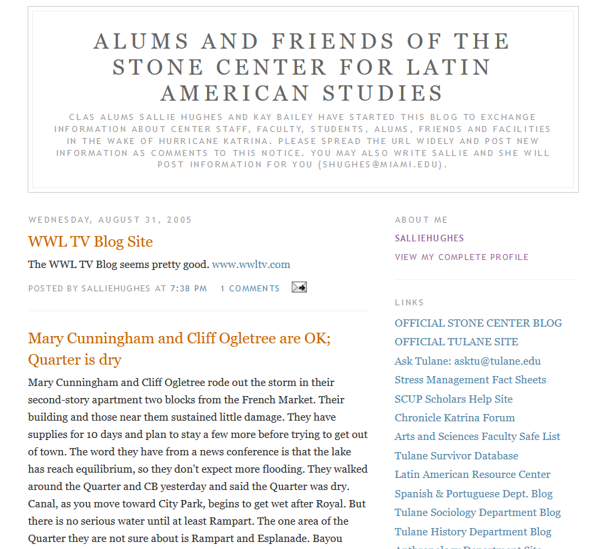
Jones Hall Reconnaissance Mission | September 20, 2005
Three weeks after the hurricane, Jimmy Huck and Sue Inglés arranged a special visit to Jones Hall to assess the situation and gather key data needed for the Title VI grant application. The team had their instructions: get the hard drives, computer systems, and manual files.
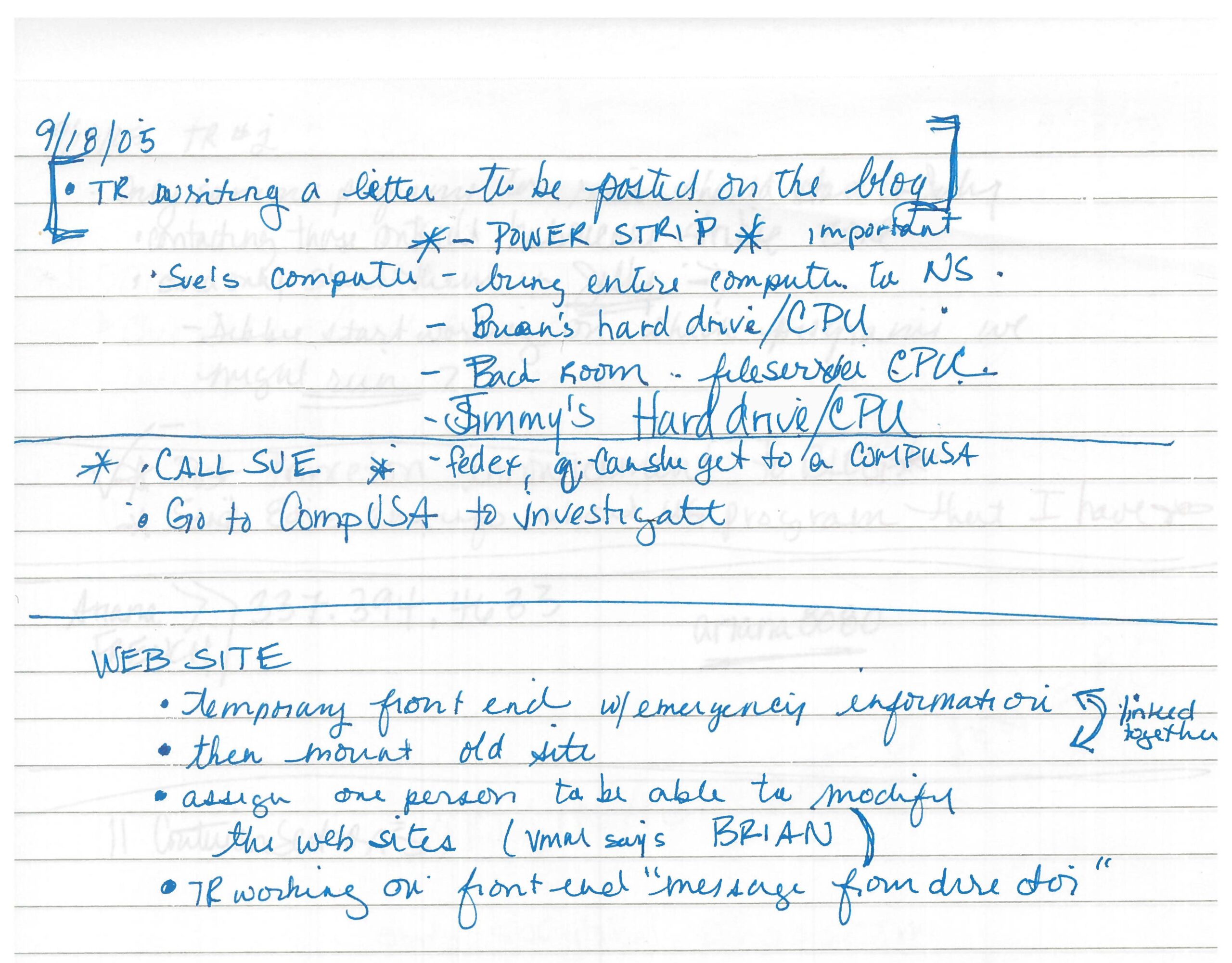
“Jimmy picked me up in Covington and we drove down 190 to Highway 12 to 55 to 10 and then we came in through the airport on Airline Highway because the Causeway was closed. Normally, that’s a one hour drive. It took us three hours.”
– Sue Inglés
Jimmy and Sue surveyed the scene and took pictures of the Stone Center offices and the exterior of Jones Hall. In his blog update posted September 23, Tom Reese writes: “The Norton Student Lounge (“La Cueva”) and our auxiliary file storage room in the basement of Jones Hall were flooded to the ceiling.” The Cuban and Caribbean Studies Institute, under renovation at the time, lost all of the files that were in temporary storage in the Jones Hall basement. Below are photos courtesy of Jimmy Huck.
A Changing Tulane: Rebuilding | October 2005 – January 2006
October 4, 2005 – Tulane University Webmail becomes operational
October 7, 2005 – Stone Center Conference Call (Sue, Lucie, Tom, Ana, Debbie, Jimmy & Val)
October 8, 2005 – Official Stone Center Website comes back online
Late October 2005 – A majority of Stone Center staff return to New Orleans
December 1, 2005 – Title VI Grant Deadline Extension for those affected by Hurricane Katrina
December 5, 2005 – Announcement of Renewal Plan
January 17, 2006 – Students return to campus for Spring 2006 semester
“We had to open in January. If the univesity did not open in January, we would never reopen.”
– Ana López
Tulanians begin coming back in the months following the storm with the overarching goal to have everything up and running by January. The university implements the Renewal Plan, which enacts changes regarding gendered enrollments (dissolving Newcomb College to create Tulane-Newcomb College) and establishing a public service requirement for undergraduates. Jimmy Huck reflects that “[t]he Stone Center was well positioned to that shift within the university,” given that “Latin American Studies as an area program had already been oriented towards activist work, activist thinking, connecting scholarship with the needs of communities.”
Finally, on January 17, 2006, the Spring semester commences, in-person, on Tulane’s campus.
A Graduate Student Perspective: Annie Gibson
“Hurricane Katrina fell on what would have been my very first day of grad school.”
– Annie Gibson
Click above to listen to a first year Latin American Studies M.A. student, Annie Gibson (Ph.D. Latin American Studies, 2010; currently Director of Study Abroad at Tulane), reflect on her experience with Hurricane Katrina, the mentorship she received from Jimmy Huck, and the development of her dissertation research, which dealt with the influx of Brazilians to New Orleans for post-Katrina reconstruction.
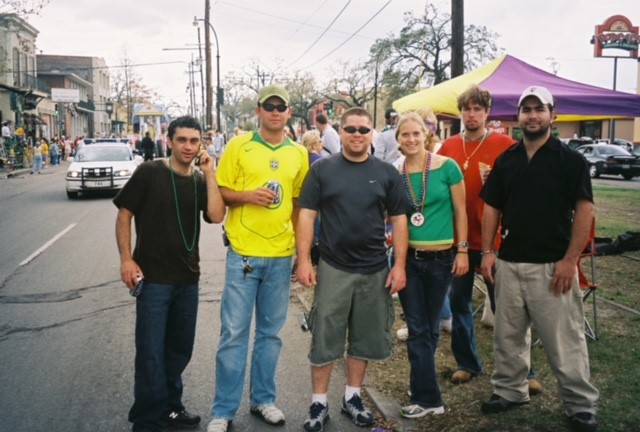
Katrina’s Legacies | 2006–
“One of the things that manifested during that time […] is this real sense of community in Latin American studies. We were all in it together. We didn’t scatter and forget one another. And this extended to our graduate students, and undergraduate students, we worked together, we wrote a grant together, we helped each other rebuild our houses and our families together. And I think that sense of community, you can still see it today.”
– Jimmy Huck
As the city was reconstituted, the overall demographics began to change starkly with an influx of Spanish and Portuguese-speaking communities. This increase in Latin American populations created new opportunities for the Stone Center to expand its outreach programming, like the Pebbles Center, a partnership with the New Orleans Public Library that existed prior to Katrina, which took on new importance as a space for families to find Spanish- and Portuguese-language books for their children. Additionally, this shift opened new avenues for scholarly work. For one, Annie Gibson’s Post-Katrina Brazucas: Brazilian Immigrants in New Orleans (2012) reflects on how Brazilians created an “enclave” for themselves in New Orleans after immigrating post-hurricane for the rebuilding process.
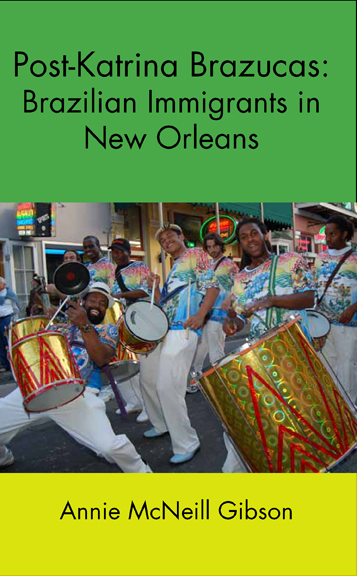
The Stone Center’s evolution is tied directly to the city’s demographic shift with nearly all Latin American Studies undergraduate courses incorporating service-learning, working with organizations like Catholic Charities’ Hispanic Apostolate, Puentes New Orleans, the New Orleans Workers’ Center for Racial Justice, and the Esperanza Academy Charter School, among others. While teaching Portuguese, Annie Gibson partnered with the School of Public Health and Tropical Medicine to offer free clinics aimed at the Brazilian community.
LAGO, the Latin American Graduate Organization, was also revived post-Katrina by Annie Gibson and Marcelle Beaulieu as a means of bridging the gap between Tulane and the surrounding community. LAGO hosted both an academic conference and a soccer tournament, which brought together undocumented immigrants, graduate students, and the New Orleans community at large.
“So that’s one thing that I see is like a legacy of Katrina, that idea of being in it together… and it’s become something so cool. Something like, much bigger that we had thought about at the time.”
– Annie Gibson
Stone Center Annual Picnic at The Fly | 2006
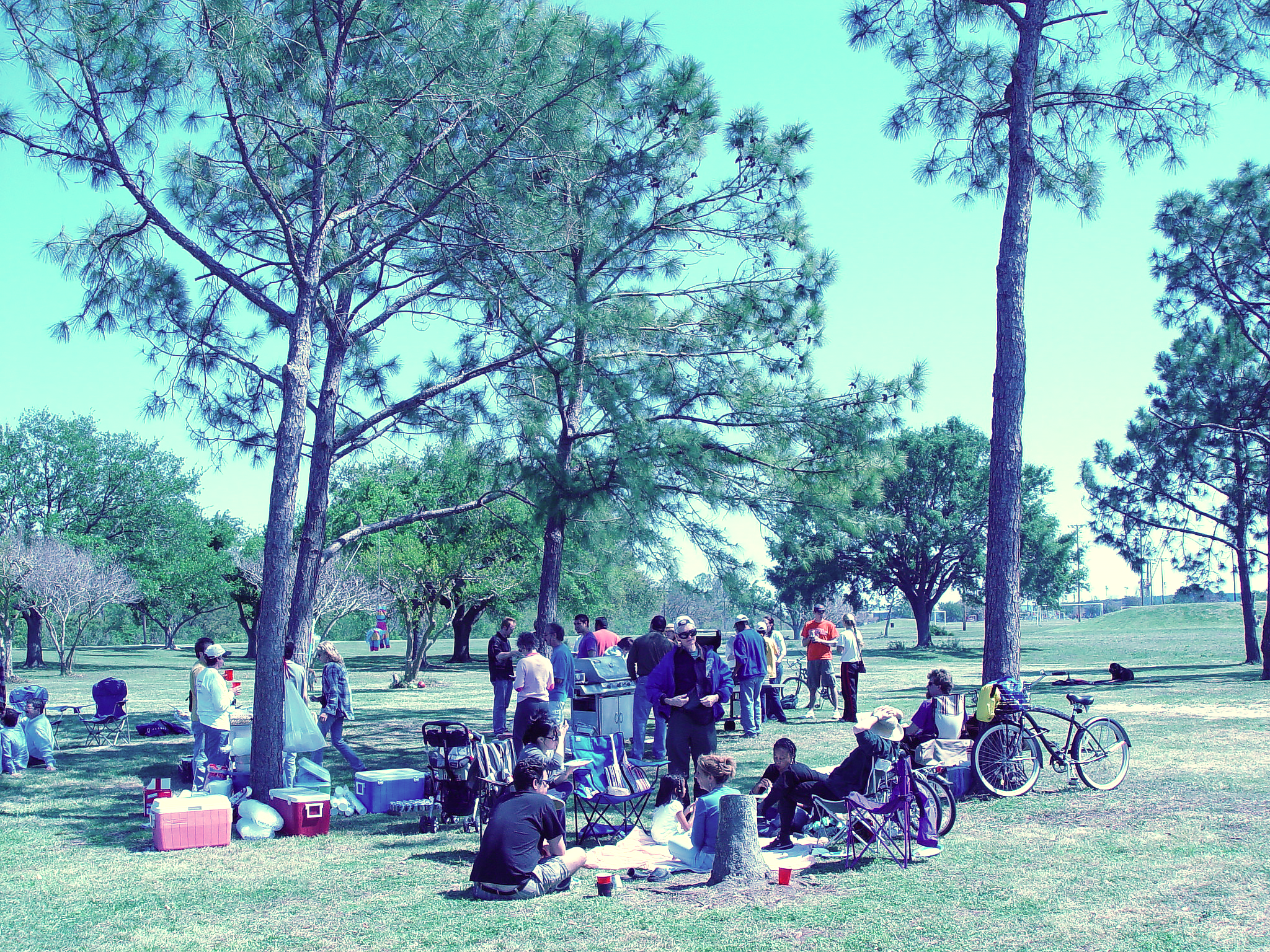
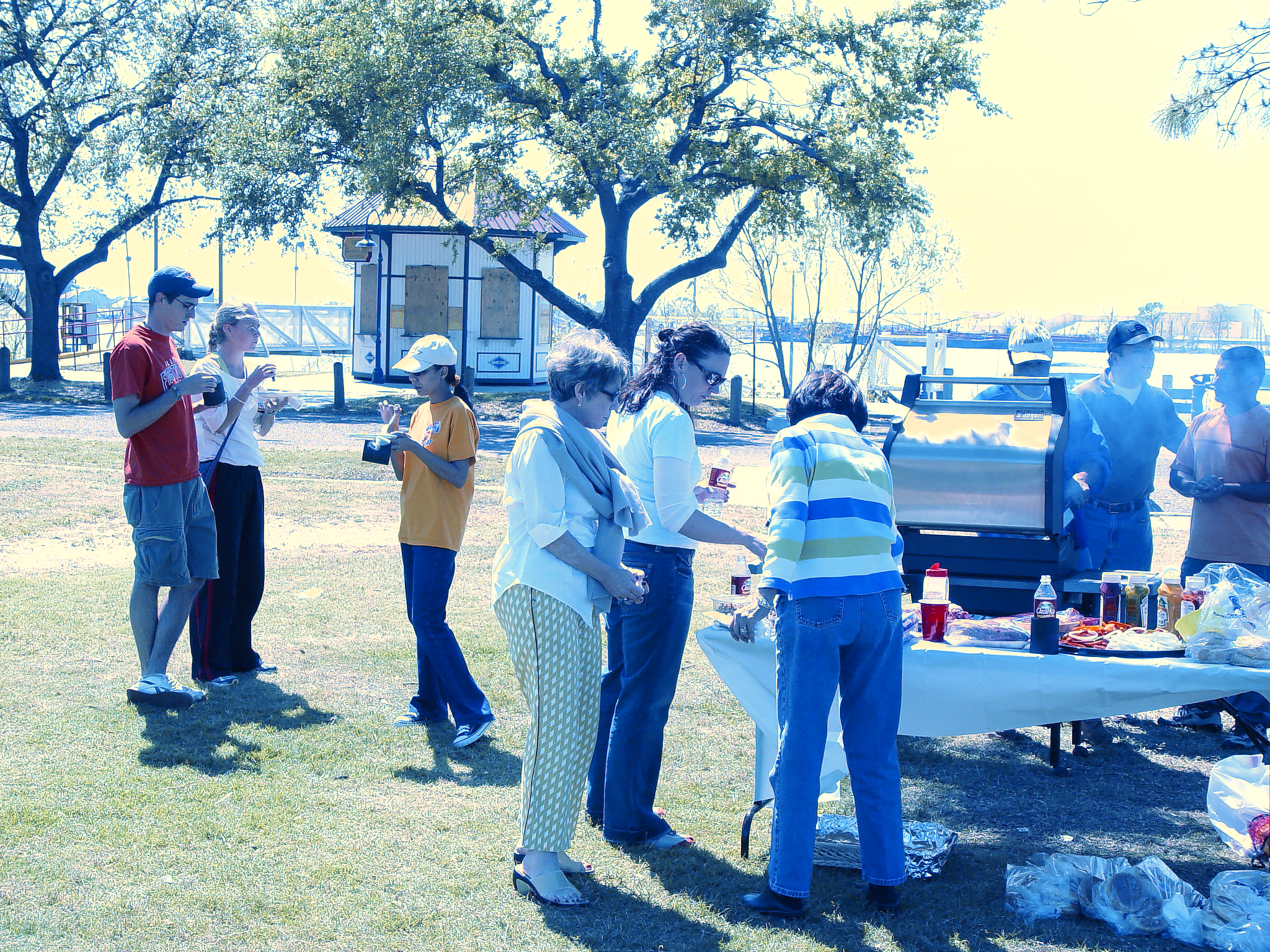
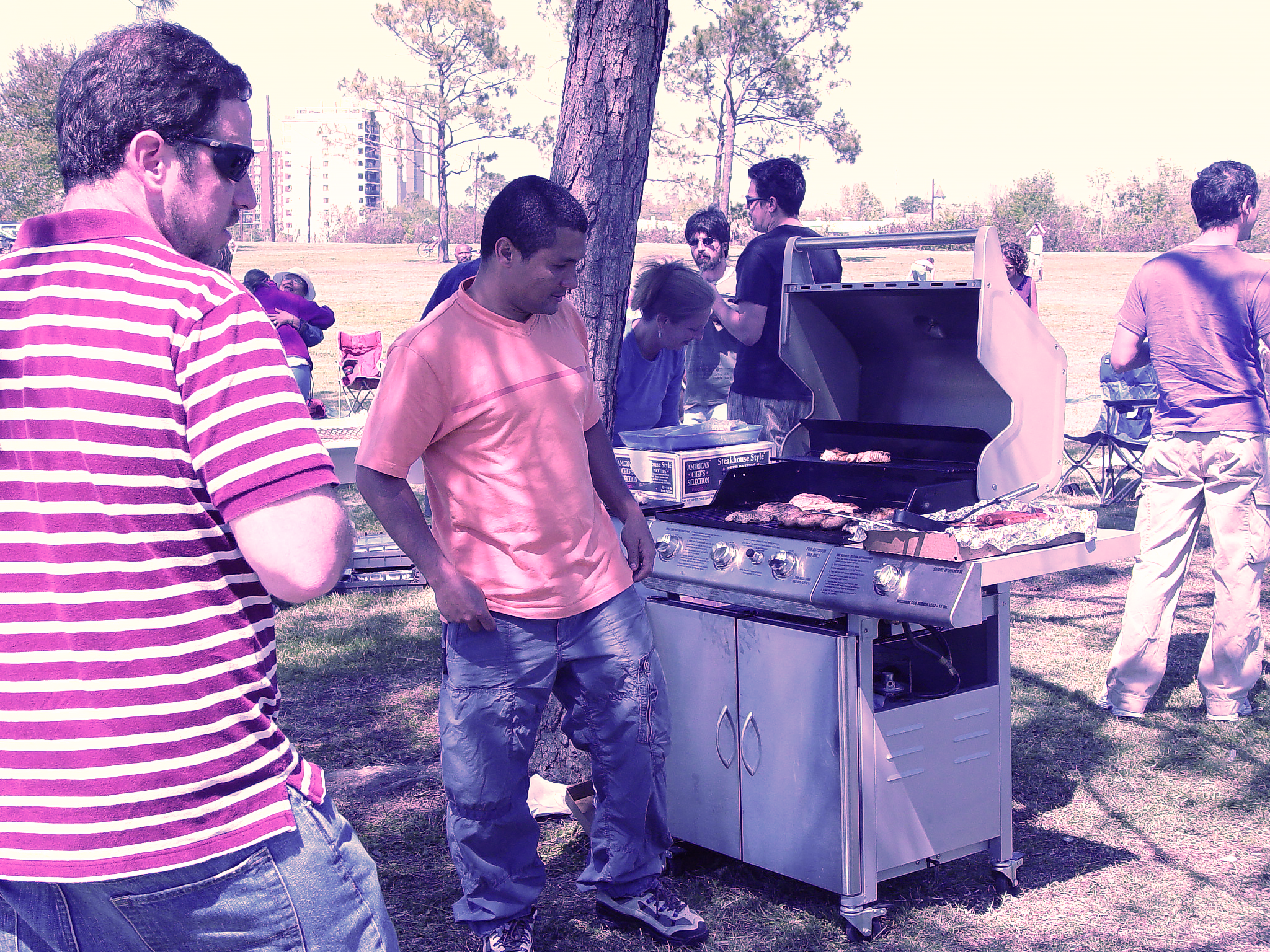
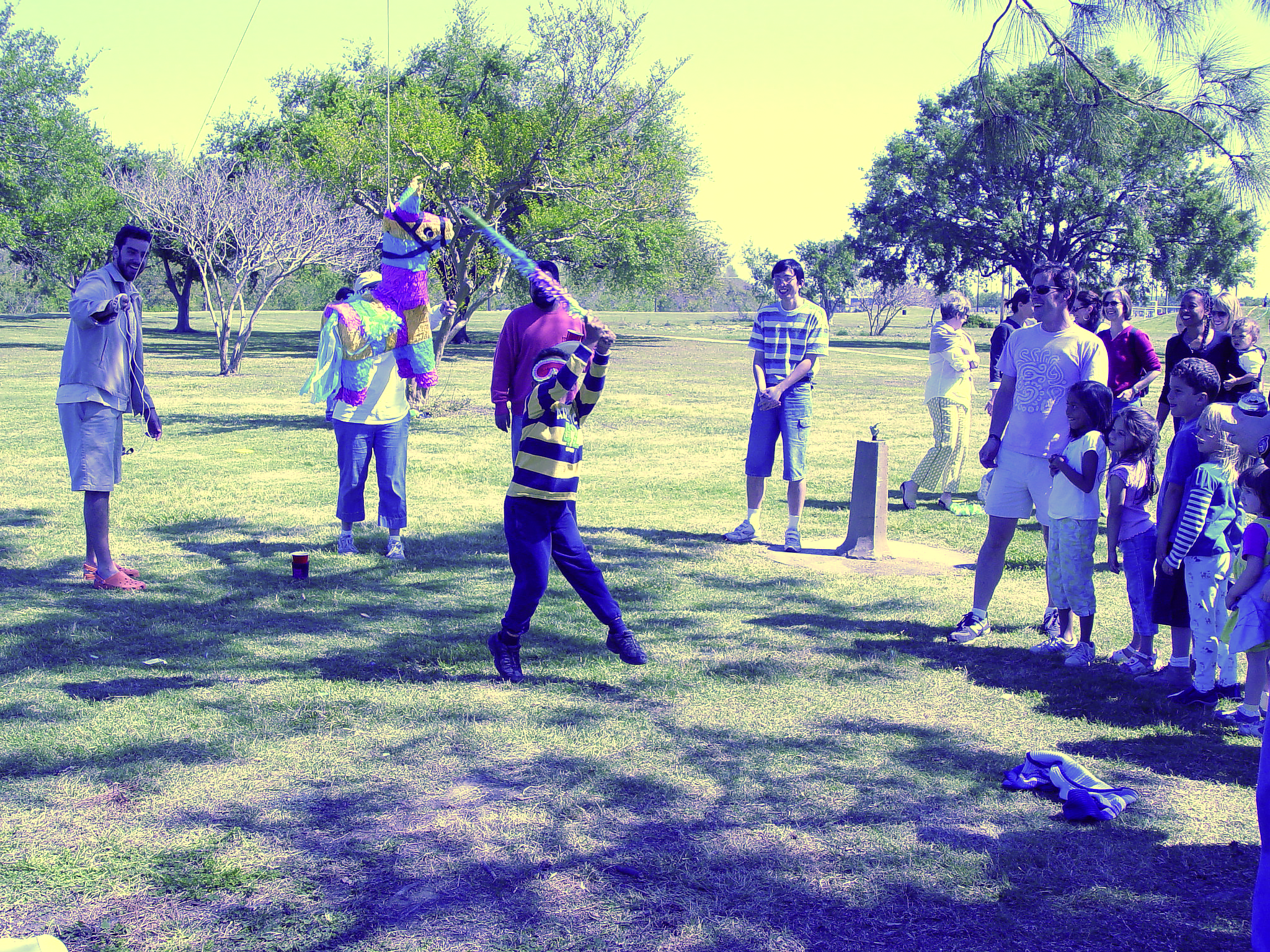
“Lots of people stood up to make things happen… to make sure we are where we are today. Not with all of our problems solved. But we’re here.”
-Tom Reese
Text and Images: Olivia Cosentino & Alejandro Kelly-Hopfenblatt
Zemurray-Stone Postdoctoral Fellows
Kendall Medford
PhD Candidate, Linguistics
October 2023
Further Reading:
Gibson, Annie. Post-Katrina Brazucas: Brazilian Immigrants in New Orleans. New Orleans: University of New Orleans Press, 2012.
Ilustre, Vincent, Ana M. López, and Barbara E. Moely. “Conceptualizing, Building, and Evaluating University Practices for Community Engagement,” Journal of Higher Educational Outreach and Engagement vol. 16 no. 4 (2012): 129-63.
Sluyter, Andrew, et. al. Hispanic and Latino New Orleans: Immigration and Identity Since the Eighteenth Century. Baton Rouge: Louisiana State University Press, 2015.
















